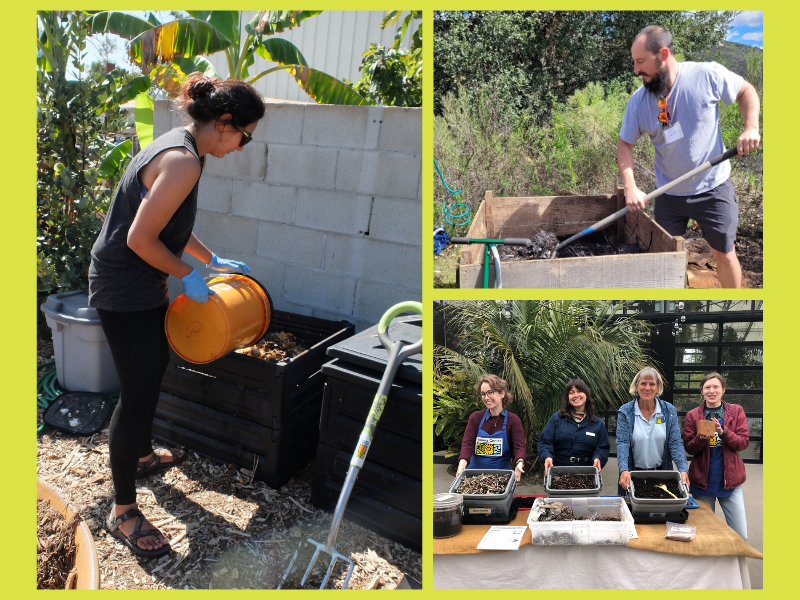Traditional Composting, Vermicomposting, and Bokashi: What’s the Difference?

Through our educational outreach, Solana Center strives to present our community with a range of options for diverting their food waste and creating healthy soil through composting. But sometimes, when presented with many choices, we can be left wondering, “What’s the right method for me?” In this article, we’ll explore some common composting practices to help you decide which one (or more) will work for your home and lifestyle.
As we dive in, it is first important to make the distinction that bokashi itself is not a method of composting– more on why later. With this in mind, let’s explore some distinctions between traditional composting and vermicomposting.
Traditional Composting Versus Vermicomposting
Traditional composting (if done on a residential scale, it’s also referred to as backyard composting) combines many types of organic materials (organic is defined as alive or formerly-living) to provide food and habitat for a wide range of decomposer organisms including bacteria, microscopic organisms, fungi, and invertebrates. Vermicomposting (from the Latin vermi for “worm”) makes use of specific worm species, usually the European Eisenia fetida, and their voracious appetite for food waste. By creating a home that simulates their native environment, including a damp layer of bedding that mimics a forest floor, vermicomposting provides a flexible option for diverting food waste.
Despite their differences, traditional composting and vermicomposting use the same basic process: organic matter is consumed then excreted by decomposer organisms in the presence of air, breaking materials down into their constituents.
Bokashi Fermentation
Now, we can contrast these methods to bokashi, which is not a composting or decomposition process, but a way to treat organic matter prior to composting. It’s often called a “pre-composting” technique.
If you’re just learning about bokashi, the basic idea is that fresh food waste is placed in an anaerobic environment and inoculated with a special mix of microbes, including lactobacillus, that facilitate fermentation. As the microbes multiply, they create a highly-acidic environment that allows the organic material to retain most of its structure and nitrogen for an extended period of time. Of course, this won’t create finished compost on its own– in fact, while kept anaerobic, bokashi prevents decomposition from occurring. The real magic happens when air is re-introduced to the system.
Once food waste has been fully fermented, it can be added to an aerobic composting system to fully degrade. So, bokashi can be used in tandem with the other two methods described previously. Bokashi-treated waste can be combined with “browns” for traditional composting, or added to a worm bin in the same manner as regular food waste. Additionally, using bokashi provides additional and very low-maintenance composting; the fermented waste can be “trenched” (buried and covered with 12–18 inches of the excavated soil) where it can decompose and enrich the soil. And yes– soil does contain oxygen to help with breakdown! We’ve found that native worms love this stuff as much as the composting worms do, and will flock to the trenched areas to help with decomposition.
We hope this article has provided some insight into your composting options. To learn more, attend an upcoming workshop or ask an educator by calling the Climate Solutions Hotline at (760) 436-7986 ex. 700!
